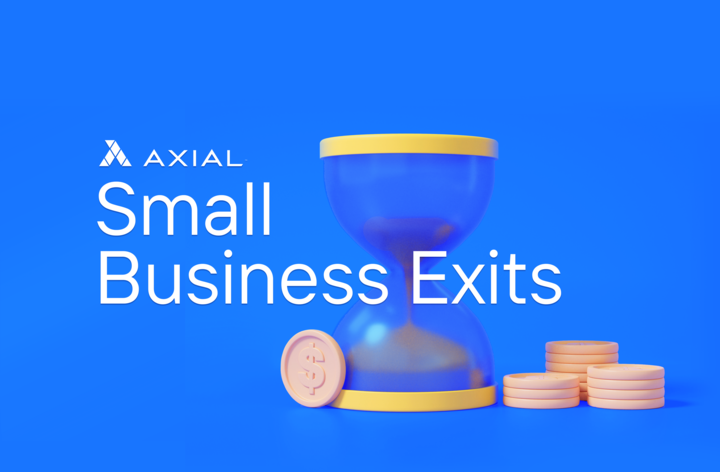
Small Business Exits: M&A closed deal data
Welcome to the October edition of Small Business Exits, the monthly publication featuring fully anonymized deal data from a selection…
2019 is looking a lot like 2018, especially when it comes to the credit markets. The availability of credit remains strong, which is bolstering today’s very active M&A environment. We talked more about the topic with Ted Koenig, president and CEO of Monroe Capital, a lending firm focused on the middle market with more than $6 billion of committed capital. The firm has recently financed deals for private equity firms including J.F. Lehman & Co., Warren Equity Partners and closed its $1.33 billion Capital Private Credit Fund III.
Ted Koenig: The M&A environment is as dynamic as we have seen over the last several economic cycles. Purchase price multiples are at all time highs. Availability of credit is very strong and private equity dry powder is significant. But the real game changer in this current cycle is that the corporate strategic acquirers are aggressively back in the game and sitting on record amounts of cash due to recently enacted tax cut and accelerated depreciation legislation. This has resulted in them being a credible force in the M&A market pushing the private equity firms to be even more aggressive. More free cash flow coupled with higher purchase price multiples drives more M&A. Even PE firms are electing to cash out their holdings at what they perceive could very well be the top of the market. Our firm has been financing M&A transactions since 2000. This is probably the most competitive period in our memory for M&A.
In one word, robust. Whenever the M&A market is hot, the credit markets are hot also. Credit is the fuel that drives M&A. Private credit has been the fastest growing asset class among institutional investors since the financial crisis. Not only is this true in the U.S. but also around the world, where many countries have experienced negative interest rates for the last several years. Investors such as pension funds, endowments, foundations, universities, etc. have been searching for current and reliable yield in a yield-starved world. This current yield is needed to fund employee health and welfare benefits for pension holders around the world as well as current operations for endowments. Private credit has provided the answer to that need. Many long-term providers of reliable credit like Monroe are active in the market today However, there are also many newcomers who have entered the private credit market space and are actively competing for new PE-sponsored financing. Like PE dry powder that needs to be put to work, there is plenty of private credit dry powder in the market today.
It seems like all deals are getting financed in this current market. Healthy deals involving good companies that generate consistent cash flow get financed in all market cycles. Today, companies in industries such as business services, recurring revenue software, medical and healthcare services, new media, food, and consumer staples have been particularly in demand. But even deals in cyclical industries like restaurants, auto parts, advertising, travel, and hospitality are getting done in today’s hot environment. That is a function of frothy PE and private credit investor appetite. Even an out of favor industry like retail, particularly brick and mortar retail, has had no shortage of interest from lenders. Asset-based lenders and liquidation firms have been teaming up to finance this sector with a flurry of interest. Just look at the competition to do the recent Sears DIP financing.
Unsponsored deals are like diamonds in the rough. They are a lot more work to find and there are not many of them available. But, if you can find a good one, then the pricing and deal structure is often a winning and valuable combination. In a frothy M&A environment, unsponsored buyers or non-sponsors have a hard time competing for deals with traditional PE firms and strategic buyers who are both hungry to execute. In a hot market, most deals are sold through an auction process led by an investment banking firm.
Non-sponsored purchasers have a tougher time executing in this environment. They have an inherent disadvantage in that they often do not have committed funding and must cobble together money on a deal by deal basis, which translates into less certainty of close for the seller and the selling banker. In a market where advisors working on success fees are often driving the process, non-sponsors are at a disadvantage in a heated deal auction climate. We at Monroe actively seek out and look to do non-sponsored deals, as do many others. We look to do somewhere around 50% sponsored M&A financing and 50% non-sponsored. In the current environment, we are closer to a 75/25 split.
We are always thinking about a down credit cycle. In our business, no matter how loud the music is playing, you need to think about what happens when the music stops. We are tightening our lending standards and more actively monitoring our portfolio companies. Specifically, we are being much more cautious about aggressive EBITDA adjustments and valuations and we have increased the surveillance activity of our borrowers in terms of information we are requesting and that we are actively monitoring. Our experience over the last 18 years in this business tells us that when you are at the top a business cycle, where I believe we currently are, we need to exercise caution when the market is being aggressive on covenants, loan documentation, and EBITDA adjustments. Each of these items factor into recover rates of defaulted credits. Those were the lessons we learned in the last down credit cycle in 2008/2009.
Company performance is always the number one thing that impacts our portfolio and the overall markets. We monitor that closely. However, from year to year, other factors come into play that require close attention. I believe this is one of the toughest periods of time to gauge and predict those “other factors”. We are at a unique crossroads as a country in terms of geopolitical and domestic risk. We have unpredictable and erratic domestic and foreign policy that results in uncertainty in trade, tariffs, foreign sales, and imports. Add to that interest rate and currency volatility. Companies generally plan one to two years in advance for strategic decision making. Very few could have predicted the effects of a 30-day government shutdown and the associated economic collateral damage associated with it. We are far from clear sailing for the rest of 2019.
2019 looks a lot like 2018 right now. M&A activity is strong and there is plenty of capital available from PE sponsors and private debt providers alike. Corporate strategics are actively in the M&A mix, as are many foreign buyers looking for a U.S. footprint. All of this bodes well for a strong 2019 in deal making and in deal financing.
